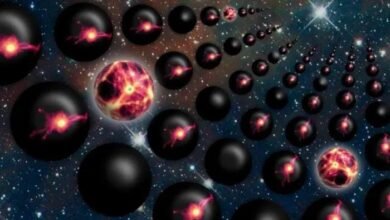What was it like when the first stars began to shine? | by Ethan Siegel | Starts With A Bang! | Dec, 2023

The Big Bang’s hot glow faded away after only a few million years, leaving the Universe dark until the first stars formed. Oh, the changes!
For perhaps as long as the first 100 million years after the start of the hot Big Bang, the Universe was devoid of stars. The matter in the Universe required just half-a-million years to finish forming neutral atoms, but stars would take much longer to form for a variety of reasons. For one, gravitation on cosmic scales is a slow process, made even more difficult by the high energies of the radiation the Universe was born with. For another, the initial gravitational imperfections were small: just 1-part-in-30,000, on average. And for yet another, gravity only propagates at the speed of light, meaning that when the Universe is very young, there’s only a very small distance range over which other masses can “feel” the gravitational force from any particular initial mass.
As the Universe cooled, gravitation began to pull matter together into clumps and eventually clusters, growing faster and faster as more matter was attracted together. Eventually, we reached the point where dense gas clouds could collapse, forming objects that were dense and massive enough to ignite nuclear fusion in their cores. When those first hydrogen-into-helium chain reactions began taking place, we could finally claim that the first stars had been born: a process taking at least 50 million years and maybe as much as 100 million years or more for even the very first ones to ignite. Here’s what the Universe was like back then.
By the time 50-to-100 million years have passed since the onset of the hot Big Bang, the Universe is no longer completely uniform, but has begun to form a structure resembling a great cosmic web, all under the cosmic influence of gravity. The initially overdense regions have grown and grown, attracting more and more matter to them over time. Meanwhile, the regions that began with a lower density of matter than average have been less able to hold onto it, giving it up to the denser regions that…
Source link





